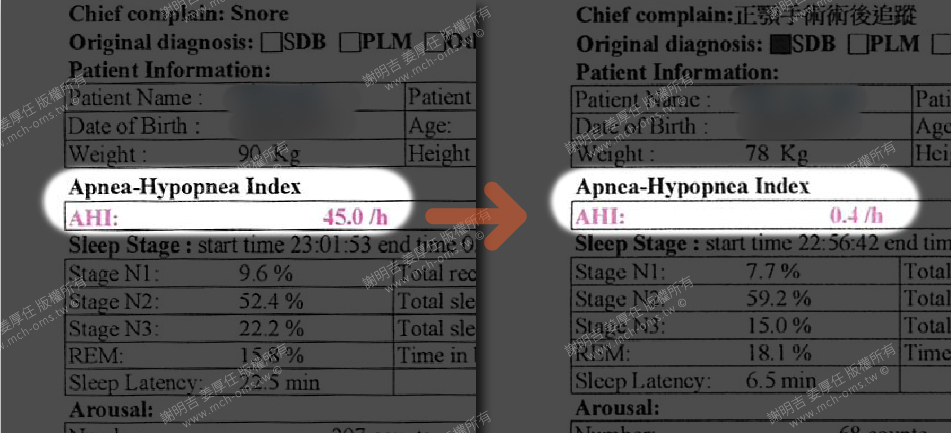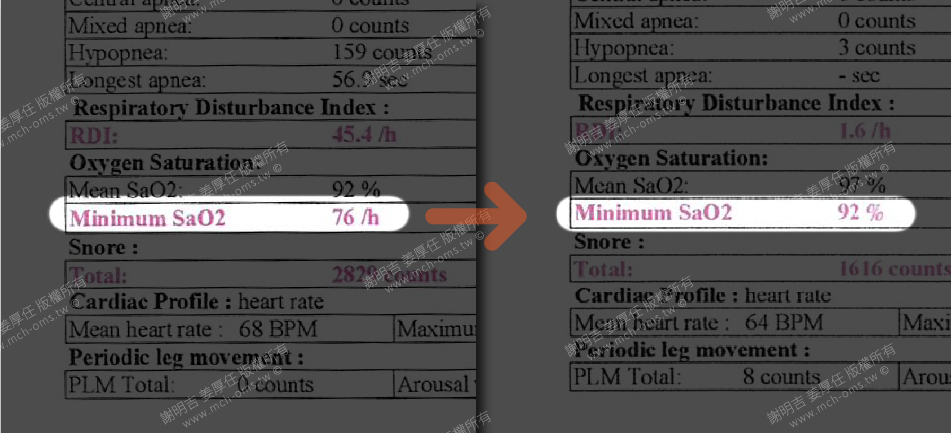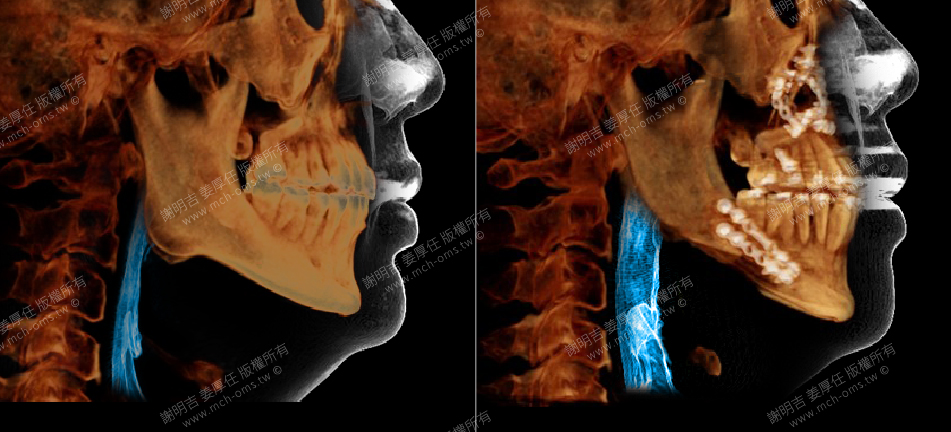| Preoperative symptoms | surgical plan |
| Retruded jaw, no chin affecting airway space, sleep apnea | 3D customized orthognathic surgery |
Diagnosis and treatment plan and postoperative changes
The 28-year-old man had a history of severe snoring, light sleep, and daytime sleepiness. After sleep testing, it was found that his AHI index was 45 and the lowest blood oxygen concentration dropped to 76%. These data showed that he had severe sleep apnea.

Through his CT scan, it was found that his upper and lower jaw bones were underdeveloped, which compressed the airway. We performed mandibular advancement (MMA) with both jaws rotating counterclockwise.
After airway lifting (orthognathic surgery), his sleep apnea symptoms were relieved, his AHI index dropped to 0.4, and his lowest blood oxygen concentration increased to 92%. He no longer has problems with snoring, restless sleep, or daytime sleepiness.

Comparison of tomography before and after surgery





